How Gen AI both helps and hinders your company research (B2B sales)
The AI paradox. Gen-AI tools make researching account prospects easier for busy b2b sales folk. However, they also introduce many traps that can erode your 'insight'. Here's how to navigate...
4/24/20253 min read


Key Points
The promise, popularity, and hidden limitations for B2B sales leads and Account Executives of using general-purpose AI tools (ChatGPT, Co-Pilot, Perplexity etc.) to research prospects
How surface-level analysis damages sales opportunities.
The alternative: domain-specific AI designed for sales intelligence.
Introduction
"I'll just ask ChatGPT to research this company for me."
This sentence has become increasingly common in sales teams across the UK. With the rise of tools like ChatGPT, Claude, and Perplexity, B2B sales professionals have embraced AI as a quick solution to their research needs.
And who can blame them? These tools promise instant, coherent company insights at the cost of a simple prompt.
But therein lies the paradox: while generative AI has made research more accessible, it may also be making your sales conversations less effective.
AI Research in B2B sales
Hubspot's State of AI survey (2024) found that 40%+ of sales professionals use Gen-AI tools. While mainly to help write sales content or prospect outreach messages. Around 1 in 5 are using it for pre-call research. The appeal is obvious:
Instant summaries of company information
No need to wade through dense financial documents
Accessible insights without specialised financial knowledge
Quick competitive analysis in plain language
For time-pressed B2B sales professionals, these benefits are compelling.
A quick prompt to ChatGPT feels far more efficient than reading an annual report or 10K filing!
The Hidden Limitations
However, our analysis of AI-generated company research summaries revealed concerning patterns:
Surface-Level Analysis: General-purpose AI tools tend to retrieve obvious information from company websites and press releases. The same content your prospects wrote to put forward their best face. The genuine challenges (and your opportunities) often remain hidden.
PR Spin Regurgitation: Without domain expertise, AI tools struggle to distinguish between genuine strategic priorities and corporate PR language. This leaves you repeating the company's marketing soundbites back to them. Not quite the path to insightful conversations!
Hallucination Issues: While general-purpose AI tools continue to improve, they still tend to include fictional information. If you haven't had time to sense-check or verify you could find yourself referring to an acquisition that never happened or growth when they're contracting!
Context Limitations: Most AI tools have knowledge cutoffs and limited context windows. This means they can struggle to accurately connect information across multiple documents.
Missing the "Cries for Help": The most valuable insights often come from subtle signals in earnings calls or annual reports—what we call "cries for help." General AI tools regularly miss these buying signals, as they lack the domain knowledge to recognise their significance.
Real-World Consequences
These limitations translate to real-world sales challenges:
Entering calls with the same generic information as every other vendor
Missing clear signals of opportunity that exist in financial disclosures
Damaging credibility by referencing inaccurate information
Failing to align your solution with genuine strategic priorities
As one sales director told us: "Using ChatGPT for company research is like using Google Translate for customer calls. It works in a pinch, but you'd never rely on it for important conversations."
The Domain-Specific Difference
The solution isn't to jettison AI from your research process —it's to use AI specifically designed for B2B sales intelligence. A domain-specific tool differs in crucial ways:
They're trained to identify relevant business challenges in financial documents
They understand the context and can spot genuine signals hidden in the PR language
They connect information across multiple sources (10Ks, earnings calls, Companies House)
They extract insights specifically relevant to sales conversations
Most importantly, these tools are designed to uncover the four elements that get you sales meetings:
Angles for provocative conversations
Problems your solution can address
Opportunities you can accelerate
Direct "cries for help" from the prospect
Conclusion
General AI tools have democratised research, but they've also created a new problem: the illusion of insight. When everyone has access to the same surface-level information, no one has an advantage.
The sales professionals who thrive in this new environment will be those who combine the efficiency of AI with the depth of genuine insight. They'll leverage domain-specific tools that don't just summarise what a company says about itself, but reveal what truly matters to their prospects.
The next time you're tempted to ask ChatGPT to research your prospect, ask yourself: Am I looking for convenience, or am I looking for an edge?
Sales Insights
Your sales meetings just got more impactful!.
Information
Sales Insights is an online service powered by Discy AI and owned by Projectsthat.Work Ltd. A company registered in England and Wales. Number 13429582.
© 2021-2025 Projectsthat.Work Ltd. All Rights Reserved
